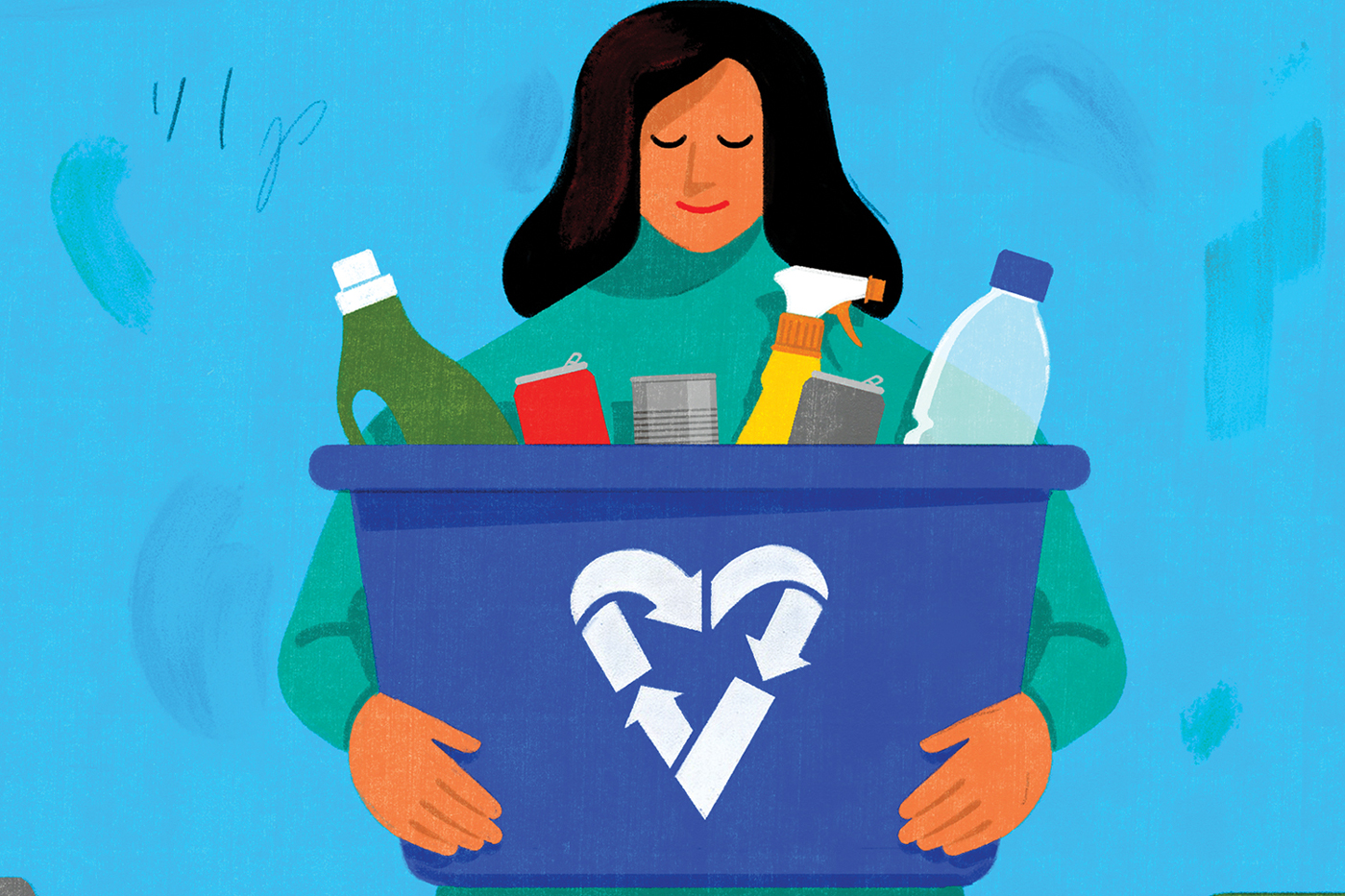
Growing up in the ’60s meant that I was exposed to the hippie concept of “let nature be your teacher.” However, intent is one thing, action is another. At Lakehead University, I tossed empty pop bottles in the garbage rather than bicycle all the way to the distant bottle depot. Until I left Ontario to head west as a young adult, I’d never heard the term “reduce, reuse, recycle.”
Edmonton in the early ’80s meant ragged Styrofoam boxes appearing after snowmelt, plastic Safeway bags blowing through the 109th Street rathole and littered streets after Oilers wins. When I became a homeowner, my board-and-milk-crate bookshelves gave way to white Ikea laminate shelving. I put the boards and milk crates in the back lane, leaning them against my shiny new garbage can, so they could be spirited away to the city dump. I never gave them another thought.
Then, one day in 1988, I came home to find a spiffy new blue box on my porch. After a successful pilot project, Edmonton had launched regular curbside pickup. At the time, the service was the largest of its kind in Canada, and second largest in North America. I was proud to be part of a trendsetting wave even though I had to wash out each and every tin can. As I drove my children to school, I began to notice what was being blue-binned and what was being tossed, how much newspaper made it to the curb, and which type of backyard composting bin was most popular. When hazardous waste collection followed, I handed over the nearly empty tins left after painting my kids’ bedrooms. Eco Stations sprang up in the four quadrants of the city, noticeable landmarks of blue and yellow, still too inconveniently far for me to get to very often.
I live in British Columbia these days, but I’ve brought my Edmonton awareness with me: I compost kitchen scraps routinely, I don’t leave home without reusable shopping bags and bulk food containers, and I choose products based partly on the amount of packaging. Whenever I visit Alberta, I drive down “memory lane” behind my former home. Blue bags festoon the alley alongside flattened cardboard icy with frost. There are now three Eco Stations in the west end, including a new one at Coronation. There’s free mulch at Ambleside, and free household furnishings at the Reuse station near Argyll Road. The city’s Waste Management Centre, processing everything from apple cores to yogurt containers, is cutting edge, attracting notice from around the world.

The days of the 3Rs are gone, evolving into a more circular model of sustainability, where resources are never expended — my plastic bottle becomes a T-shirt or a carpet which, in time, becomes another plastic bottle. Edmonton, the birthplace of the blue box in Canada and of my greener lifestyle, continues to take part in this wonderful sea change. Recycling is never a flawless system — Edmonton’s sorting costs are escalating as international markets for blue bag material become choosier. But together, the city and I are taking an asymptotic approach toward perfect sustainability — something to strive for in an imperfect world.
Holly Schofield travels through time at the rate of one second per second, oscillating between the alternate realities of city and country life. Her speculative fiction has appeared in many publications including Analog, Lightspeed and Tesseracts, is used in university curricula, and has been translated into several languages.
This article appears in the June 2020 issue of Avenue Edmonton





